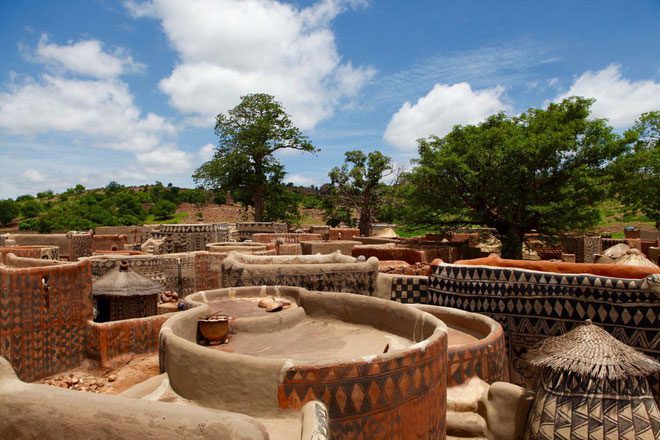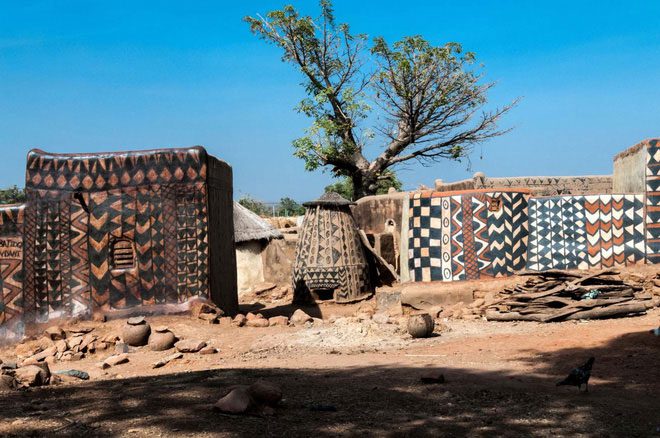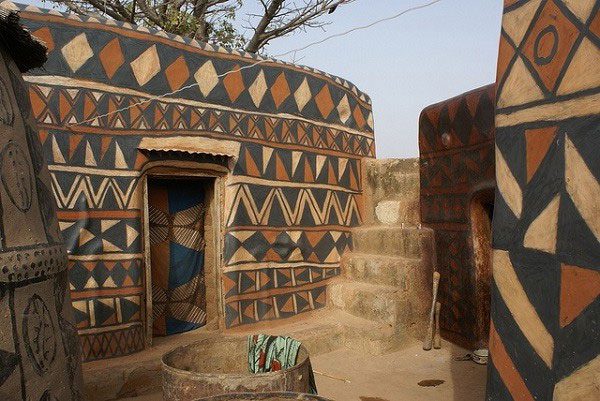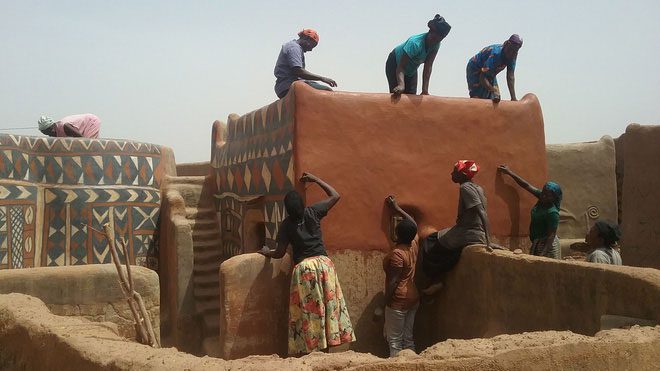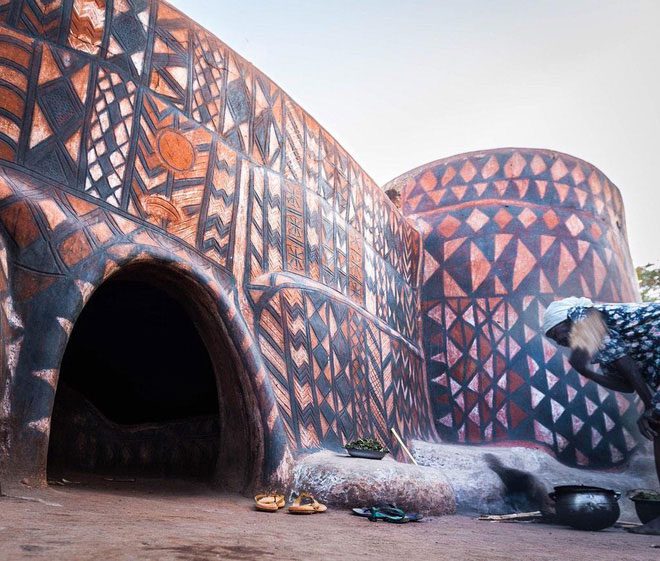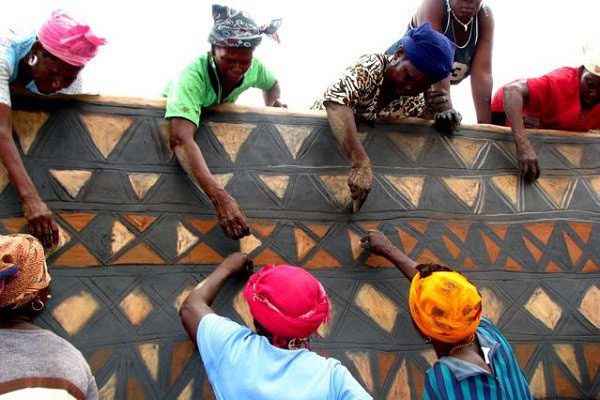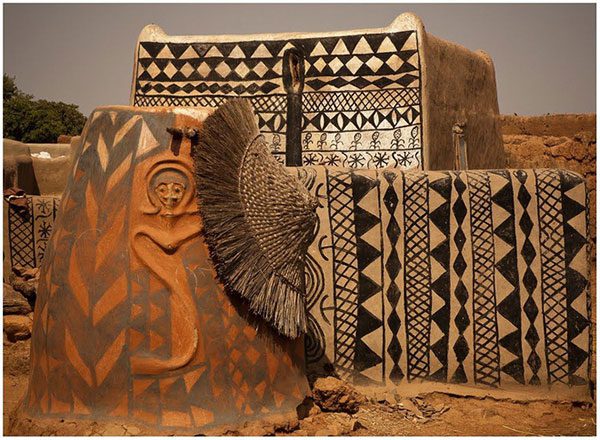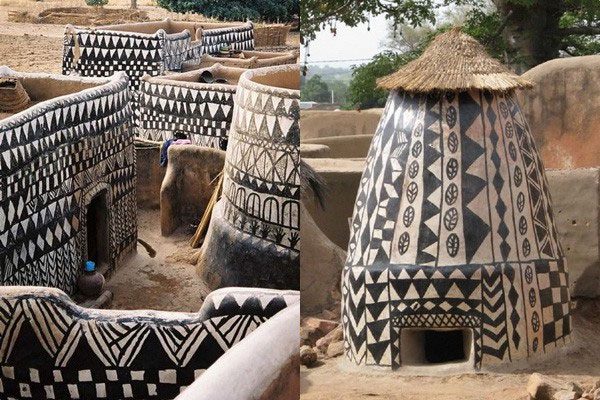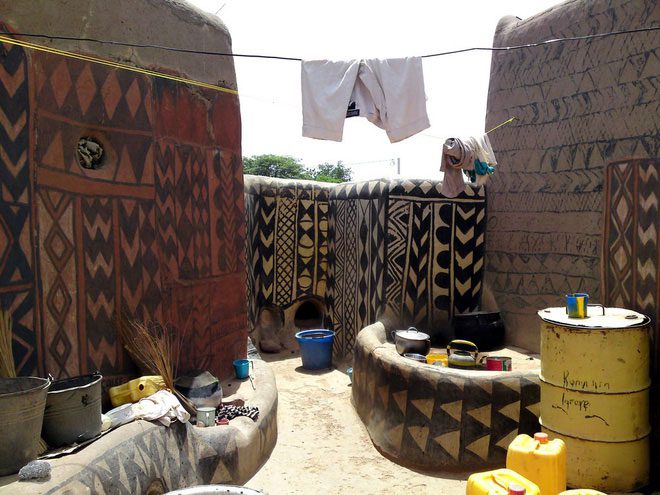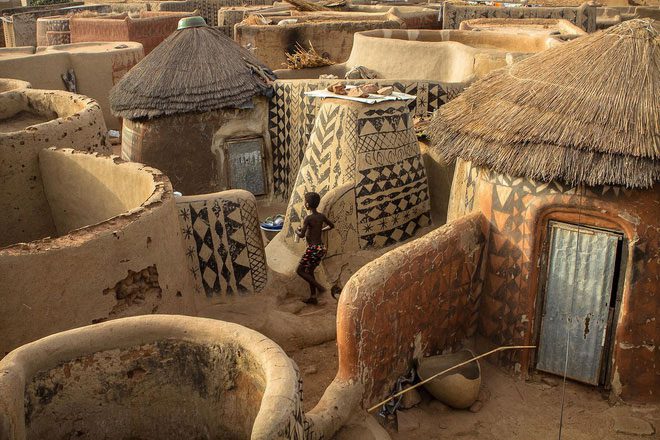People often say: “Men build houses, women build homes.” This saying seems to hold true in many social contexts across most countries in the world.
However, in a small village in Burkina Faso, a country in West Africa, this principle no longer applies. Here, the skilled hands of women create unique, artistic houses that contain exquisite details. What makes them even more “unique” is that they are made from clay, straw, and even cow dung.
Located about 20 kilometers north of the Ghana border, the village of Tiébélé in Burkina Faso is renowned worldwide for its beautifully decorated houses, which are locally known as sukhala.
The sukhala houses are part of a complex that serves as the residence for community leaders. The people here belong to the Kassena ethnic group and have a history of settlement in this village since the 15th century.
Tiébélé is known for its unique traditional Gourounsi architecture and intricately decorated walls.
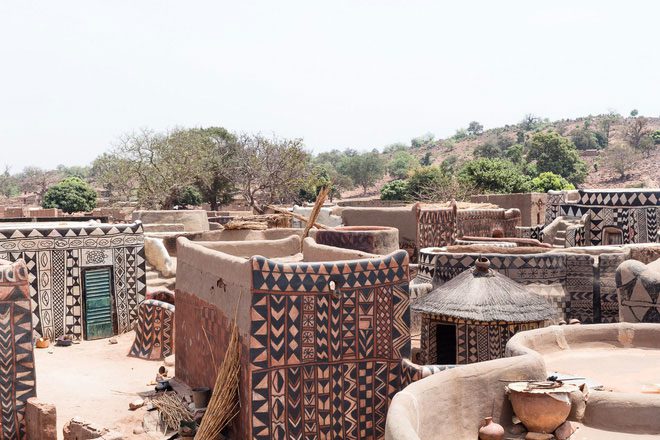
This is the home of the Kassena ethnic group.
Burkina Faso is a country on the list of impoverished nations, yet it is rich in culture. The decoration of house walls is an important part of their cultural heritage.
The decoration of these house walls is usually the work of the women in the village. This is one of the most distinctive traditional cultural practices of the Kassena people.
Each drawing, each line, and traditional pattern is painted by hand using colors of black, white, and red. Finally, a layer of natural gloss oil extracted from a leguminous plant is applied. The drawings carry specific meanings, such as praying for a bountiful harvest, wishing for fertility, and wisdom…
|
The drawings and their meanings:
|
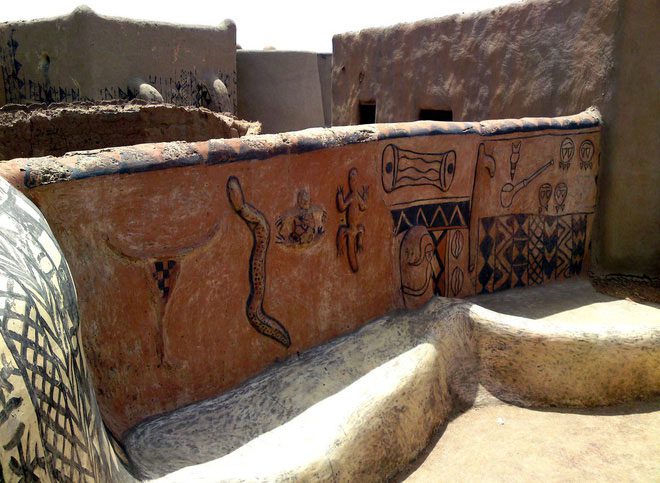
The decoration of these house walls is usually the work of the women in the village.
Wall decoration has become a community activity for women in Tiébélé village and the Kassena community in particular. About 15 women are assigned to share the task of decorating the walls of designated houses. This activity usually takes place in February or March, after the harvest season ends. Not only residential houses but also tombs for the deceased are decorated splendidly as well.
In the central area of Tiébélé village, approximately 450 people reside. All houses here are built from earth, dry grass, and cow dung; however, nowadays, people have started to replace these materials with clay, bricks, and stones to make the houses more sturdy.
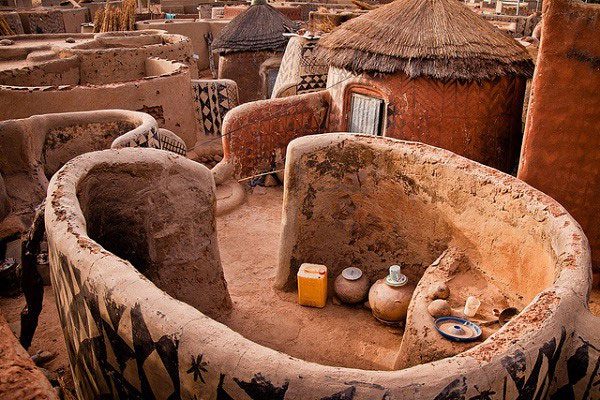
Children often live with their grandparents in octagonal houses.
The architecture of the houses in Tiébélé is influenced by the larger Gurunsi ethnic group. Their houses have no windows, with very small entrances and walls that can be up to 30 cm thick to protect villagers from harsh weather and limit enemy incursions.
Typically, children live with their grandparents in octagonal houses, while couples reside in rectangular houses, and singles live in round houses.
In 2006, after the village chief passed away, the people of Tiébélé, although lacking a leader, made great efforts to maintain their traditional customs.
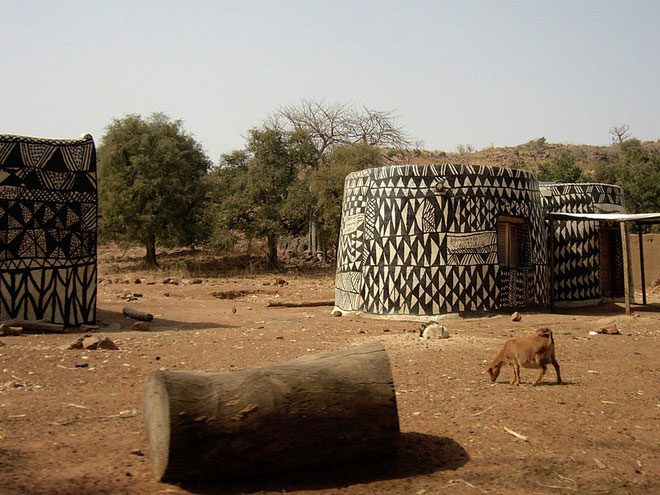
Their houses have no windows, with very small entrances.
Since 2012, Tiébélé has been listed by the World Heritage Fund as a site at risk of being threatened.
Awareness-raising activities, assistance, drainage system improvements, and safety protections in the area have been implemented.
Tourism activities in the village are also being promoted, both to create a stable economic source for the villagers and to disseminate and preserve the unique culture of the local ethnic group.
